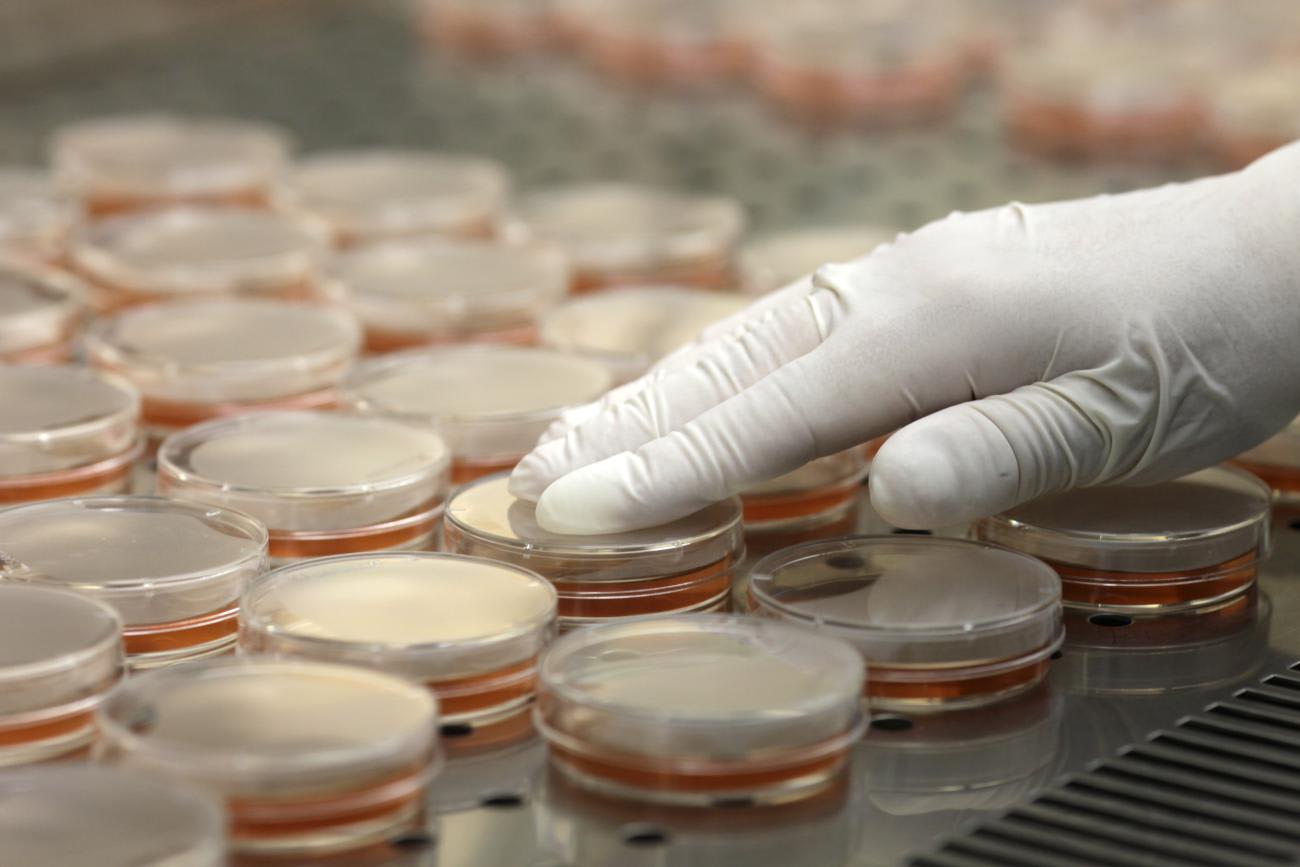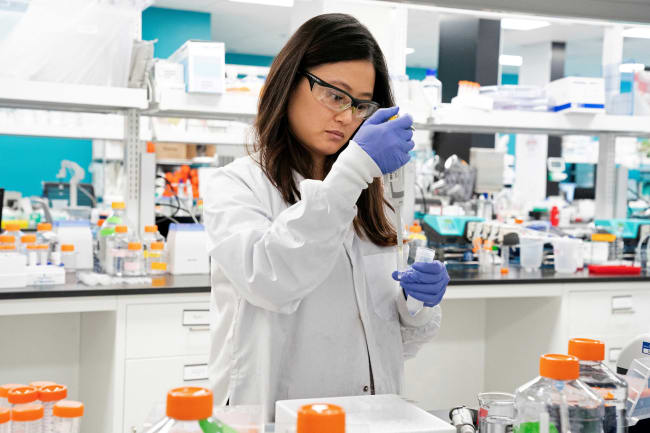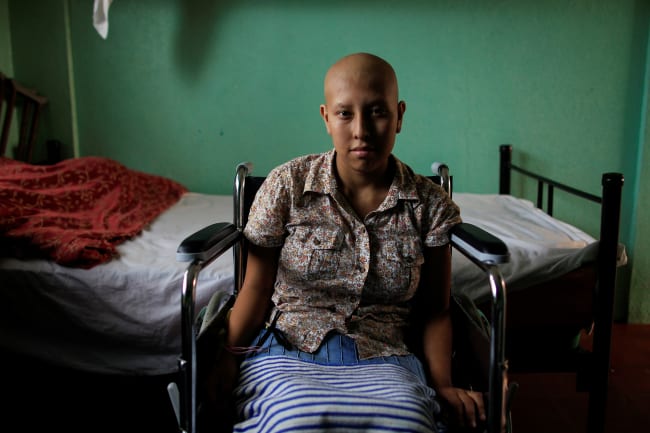In December 2024, a group of scientists did something rare: published a warning against building a technology that some of them had spent years working toward. Even more eye-popping, this came at least a decade before the tech is even possible.
The warning concerned mirror bacteria: hypothetical synthetic organisms built from mirror-image forms of the proteins, amino acids, DNA, and other biomolecules used by life on earth.
In an analysis published in Science, we and 36 colleagues—including two Nobel Laureates and 16 members of national academies from around the world—argued that such organisms could be built within the next 10 to 30 years and could pose an extraordinary threat if they were.
The analysis is that mirror bacteria could be resistant to many mechanisms of immunity in humans, nonhuman animals, and possibly plants. They could also be resistant to the predators that keep populations of wild bacteria in check. It's plausible, then, that mirror bacteria could act as an invasive species, causing fatal infections as they spread and irreversibly disrupting ecosystems in the process.
Thankfully, the threat is not imminent. Scientists cannot yet make mirror-image versions of all the components that would be needed to create a mirror bacterium, and no researchers have successfully booted up a normal bacterium from entirely nonliving parts.
The development of enabling technologies, however, is under way. Longer chains of mirror nucleic acids and large functional mirror proteins are successfully being synthesized, and continued progress on nonmirror synthetic cell research could one day provide a blueprint for starting up a functional synthetic cell. Although research on mirror proteins and peptides should be continued for their potential use as beneficial therapeutics, these advancements collectively mean that mirror bacteria could be created successfully in the coming decades.
The scientific community has begun responding. To the best of our team's knowledge, all research with the goal of creating mirror bacteria has been halted. We are not aware of any scientists today who have the long-term goal of creating mirror life. Researchers from leading institutions in Asia, Europe, South America, and the United States increasingly agree on the need for exceptional caution: Following a meeting on mirror life's risks at Asilomar in February 2025, nearly 100 researchers, funders, and policymakers joined us in signing an entreaty arguing that "mirror life should not be created unless future research convincingly demonstrates that it would not pose severe risks." These instances of rare global cooperation underscore the seriousness of the risks.
But scientific self-restraint is not enough: Scientists' concerns must now turn into durable policy. If the technology to create mirror bacteria became feasible, it is hard to imagine how anyone could stop a sufficiently motivated bad actor from building something that could cause egregious harm.
Mirror life should not be created unless future research convincingly demonstrates that it would not pose severe risks
Our paper calls on researchers, policymakers, science funders, civil society, and industry to come together to help ensure that mirror life is never created. We and our fellow authors, along with the new nonprofit Mirror Biology Dialogues Fund, are partnering with institutions around the world to continue this vital dialogue.
The first international conference on mirror life will take place at the Institut Pasteur in Paris in mid-June, where biologists, policymakers, legal experts, ethicists, and social scientists will further explore the risks of mirror bacteria and outline steps for future dialogue. The conversation will then move to the Universities of Manchester and Singapore, where we hope to progress on appropriate global policy responses. In parallel, the National Academies of Sciences, Engineering, and Medicine are conducting an independent scientific investigation.
Now is the time for global engagement.
The Risks of Mirror Life
Synthetic biology is rapidly gaining ground. Ever since scientists successfully transplanted a synthetic genome into a natural bacterium in 2010, biologists have been exploring the possibility of booting up an entire bacterium from synthetic parts.
At the same time, progress has advanced on the synthesis of mirror molecules whose chemical structure is identical to naturally occurring biomolecules but a reverse image.
All known life uses "left-handed" amino acids and "right-handed" sugars—fixed orientations that evolved billions of years ago. Driven by scientific curiosity and potential applications—including the possibility of harnessing mirror cells to produce mirror molecules for use as therapeutics—a few scientists had a long-term goal of creating entirely mirrored bacteria that would use mirror molecules: "left-handed" DNA and sugars and "right-handed" proteins and amino acids.
It is becoming clear, however, that the potential benefits don't outweigh the significant dangers. Building on a 300-page supplemental technical report that analyzed the feasibility and risks of mirror bacteria in great detail, we and our fellow authors reported that mirror bacteria could pose two extraordinary risks.
The first is immunological. Try putting your left hand into a right-handed glove—it doesn't fit. Experiments suggest that the same is true of the molecules in mirror bacteria: Immune systems don't easily recognize or clear them out. The result could be fatal infections in an unusually wide range of species.
The second is environmental. Populations of natural bacteria in the environment are kept in check by natural predators such as viruses and amoebae. Mirror bacteria's reversed molecular structure means that they would likely be substantially resistant to these predators. That would remove a significant impediment on their growth, potentially allowing mirror bacteria to grow like an invasive species—and potentially evolve further fitness advantages as they spread.

The result would be that a mirror bacteria population in the environment could function as a continuous source of infection. In turn, infections would give mirror bacteria new opportunities to spread and embed themselves in new ecosystems, potentially causing pervasive lethal infections in a substantial number of species, including humans. Even a mirror bacterium with a much narrower range of hosts, or one that could invade fewer ecosystems, could still cause unprecedented and irreversible harm.
Although it could seem possible to make mirror bacteria safe—they could be designed to be artificially addicted to nutrients found only in the lab so that they could not spread in the wild—it does not seem possible to make them robustly secure. Once it's possible to build any kind of mirror bacterium, the engineering required to remove built-in safeguards would be relatively straightforward, requiring only moderate training in molecular biology to unleash an unprecedented global threat.
Bioweapons have been banned internationally since the 1970s, but terrorists and even some states, such as the erstwhile Soviet Union [PDF], have at times pursued their development in secret, as South Africa [PDF] did in the late stage of apartheid in the 1980s. Although it's hard to imagine anyone would want to use mirror bacteria as a bioweapon given the indiscriminate harms that would result, an extremist group seeking to cause as much harm as possible could pursue them. Given how severe the consequences could be, the creation of mirror bacteria by extreme malicious actors is a real concern that needs to be addressed in advance.
Because doing so would still require incredible resources and technical expertise, opportunities remain to keep the technical barriers to mirror life creation high so that the resources for success remain out of reach of most actors.
Toward Robust Governance
A few things seem clear. For one, work on individual mirror-image molecules, which could be used to help treat infectious diseases, metabolic disorders, and cancer, does not pose the dangers of mirror bacteria and should continue. These molecules cannot replicate in the environment or evolve to become more dangerous.
On the other hand, the risks of building a full mirror bacterium pose questions that scientists or policymakers in individual countries cannot answer on their own.
These considerations include deciding where to draw the line between the chemical synthesis of molecules—such as mirror proteins—and the development of full mirror bacteria. Some mirror building blocks could be more useful than others in the potential creation of mirror life. Although science will likely need some restrictions on the creation of full mirror genomes and proteomes, it is unclear what those rules could be and how they would be enforced.
Similarly, research funding bodies should find ways to discourage mirror bacteria creation while supporting beneficial mirror molecule research. Our paper in Science argues that funders should make clear that they won't support research with the goal of creating mirror bacteria. But that does not stipulate what should still receive funding and what is too dangerous to pursue.
Although, as the recent Asilomar gathering showed, scientists increasingly agree that mirror life should not be built, they will likely need oversight to prevent bad actors from working on mirror bacteria. Some existing frameworks and agencies governing threats such as select agents, invasive species, or bioweapons could serve as inspiration for mirror life regulation. The scientific community needs to address these considerations now, which would require policymakers, research funders, civil society, the private sector, and the public to come together in dialogue to chart a path forward.
Given the implications of mirror life, that dialogue needs to be global. Our writing group for the Science paper was uncommonly interdisciplinary and international, including experts in synthetic biology, immunology, medicine, plant pathology, ecology, evolutionary biology, biosecurity, and planetary sciences working in Brazil, China, India, Japan, Singapore, the United Kingdom, and the United States. Seeing this productive dialogue from scientists at leading institutions that transcends national boundaries is cause for optimism.
When scientists speak with one voice, the world should take note. Too often public health and biosecurity are reactive. Too often policymakers establish guardrails only after a technology has caused harm—such as after chlorofluorocarbons had already torn a hole in the ozone layer. It's rare to have the luxury of time before a threat materializes.
The early recognition of the risks of mirror life gives scientists and policymakers a precious window for reducing the risks without limiting work on beneficial applications of biology.
This is a golden opportunity to mobilize and build collective anticipatory caution. Society cannot afford to miss it.













